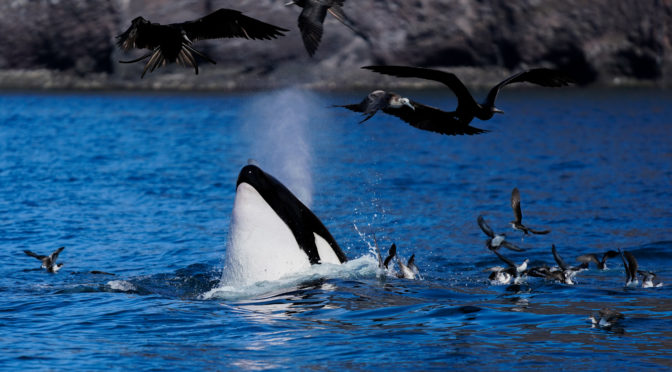Punta Vicente Roca, Isabella and Punta Espinosa, Fernandina
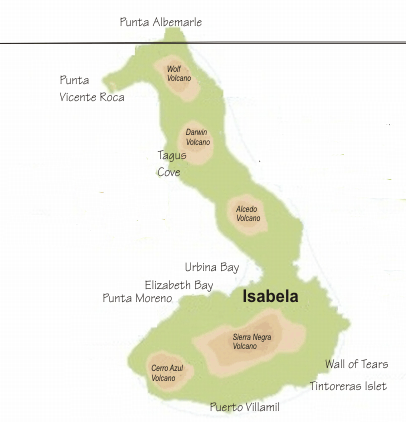
Isabella Island is unique in that it looks like a sea horse. It is the second largest island in the Galapagos and has the most active volcanoes in the islands. For the most part, the island is covered with lava fields and almost no vegetation except for a couple of cactus trees, the southern highlands have dense vegetation and mangroves that can be explored by canoe, sea kayaks, or zodiacs. We visited the island a couple of times during the trip.


Punta Vicente Roca is available to snorkelers but we only had access to the area using zodiacs. Once again, the zodiac trip was outstanding. As we were exploring the island for the wildlife, all of a sudden, the zodiacs turned seaward and went toward something the naturalists didn’t expect that day. We saw Orcas. It turns out they may be seen in the western part of the islands but it was a couple of years since they appeared. The Orca almost seemed to be playing with us. It came up between the zodiacs. We could almost reach out and touch it. The naturalists were so excited. We followed it around as it came up for air.Finally, after more than an hour of Orca excitement, we turned back to the island exploration.
Punta Espinosa, Fernandina
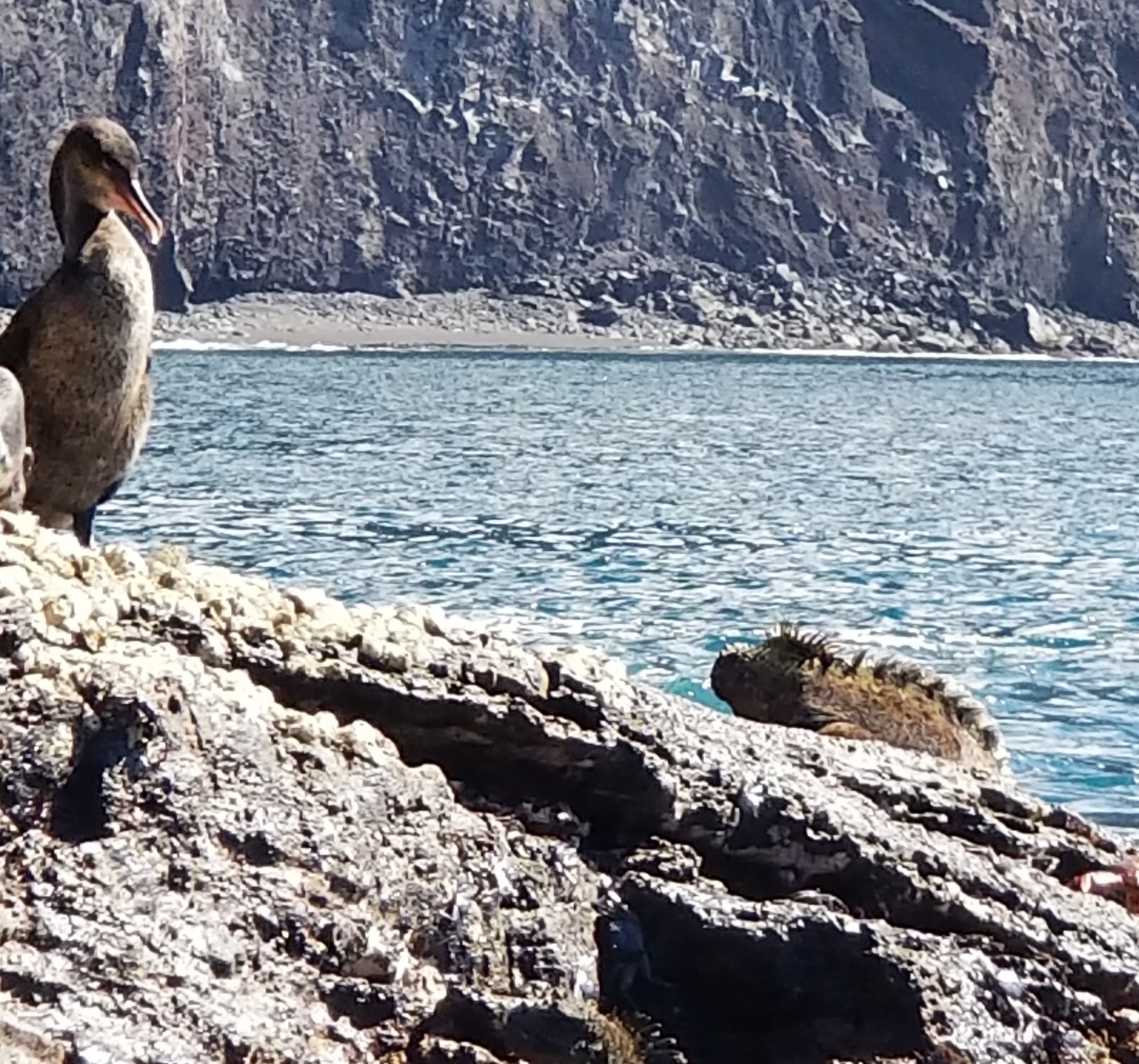
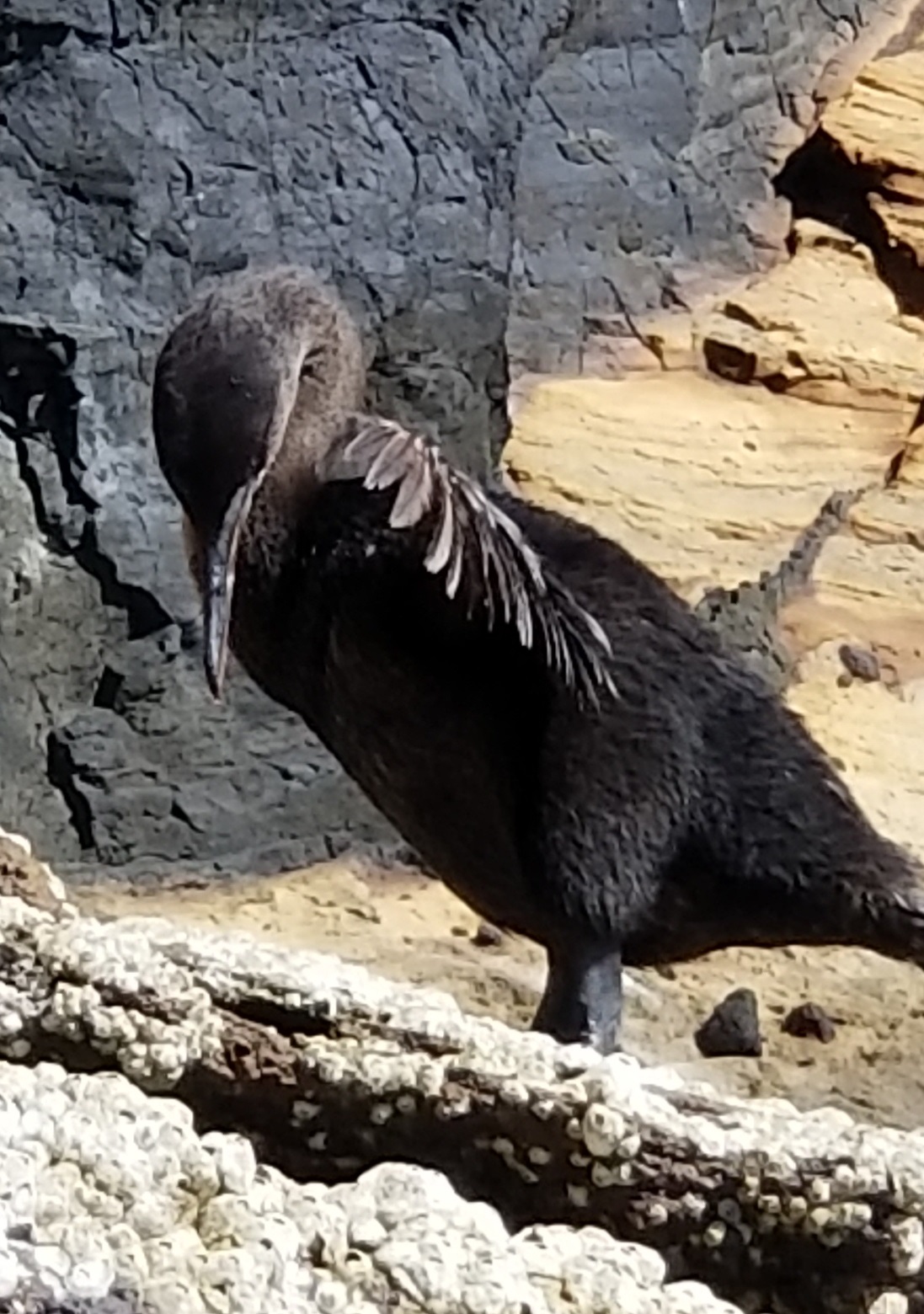
As we found out in our lectures, Punta Espinosa is one of the very few pristine places in the world. No animals were introduced to the island so it is an intact ecosystem. It is also very stark and barren but it is still full of marine animals. It has marine Iguanas that swim in a funny way. They use their tails to swim and pop their little heads up to breathe as they go along. There are also lots of the little red crabs that are everywhere (called Sally Lightfoot) as well as the penguins, cormorants, and boobies.
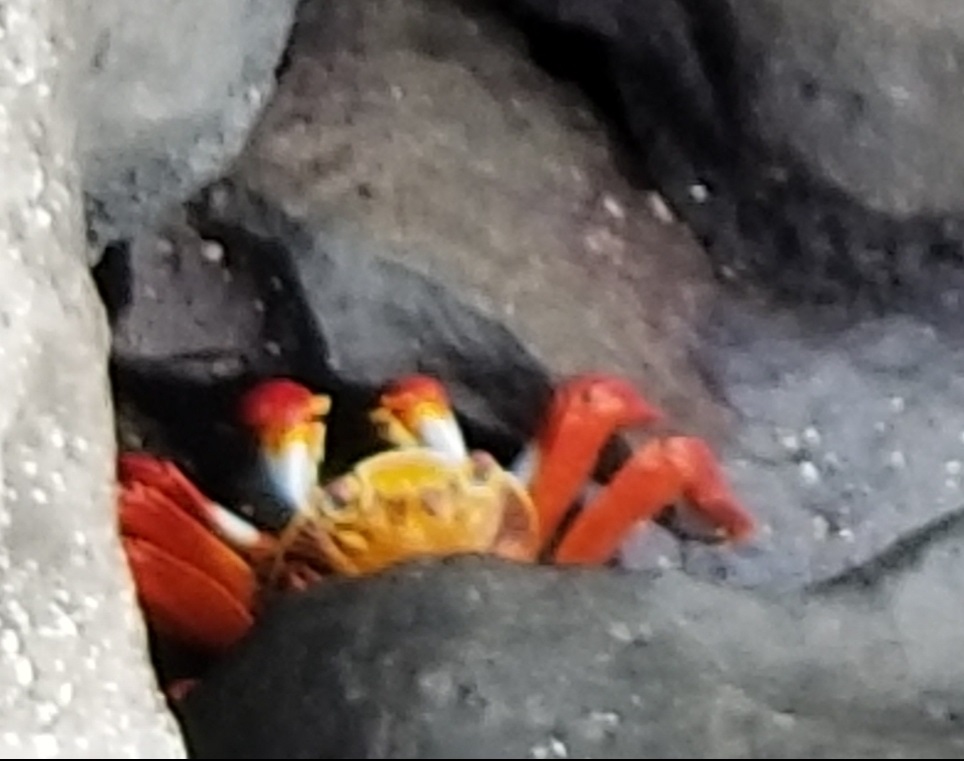
There were hikes in the afternoon but I did not participate as it was too rocky for my ankle.

